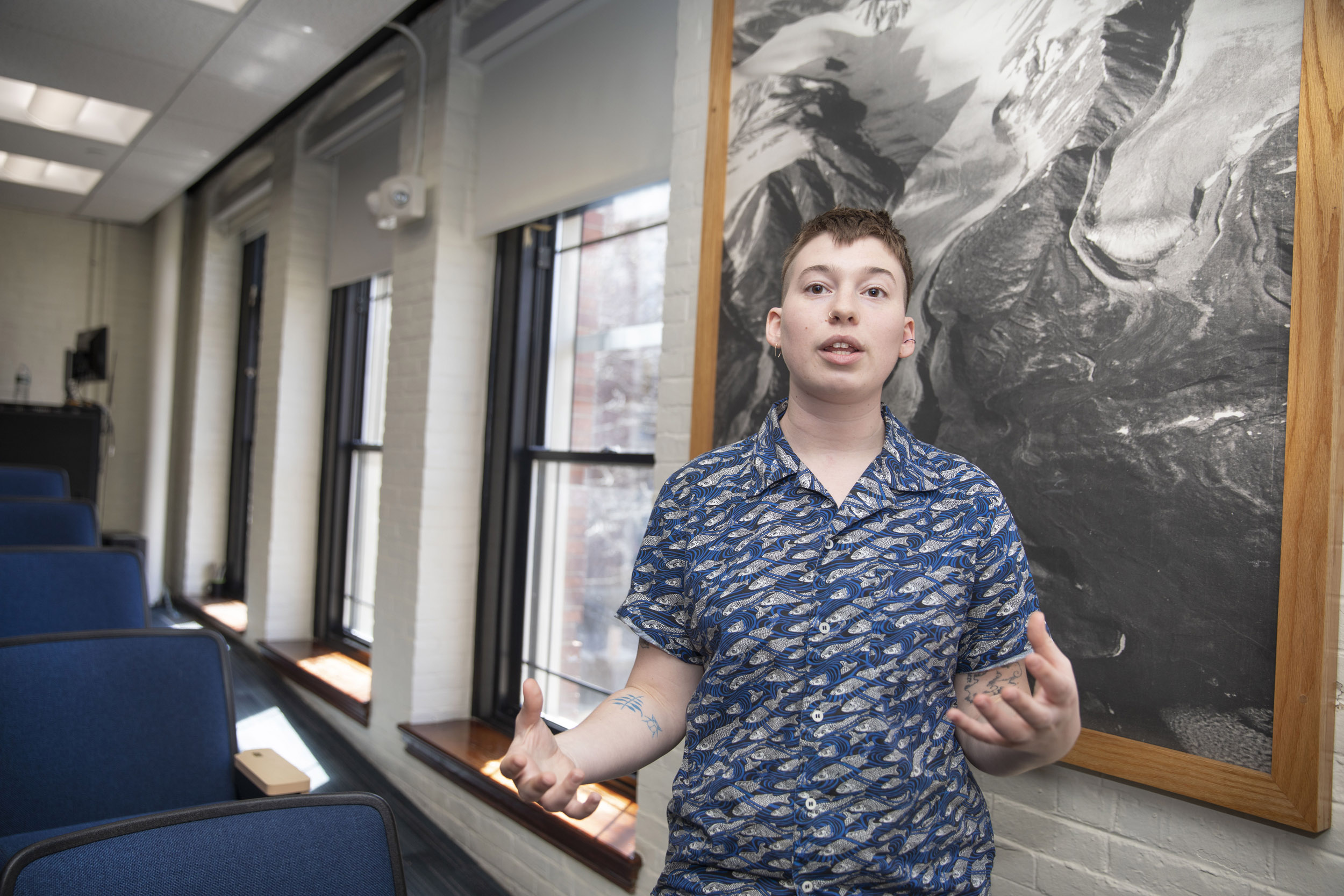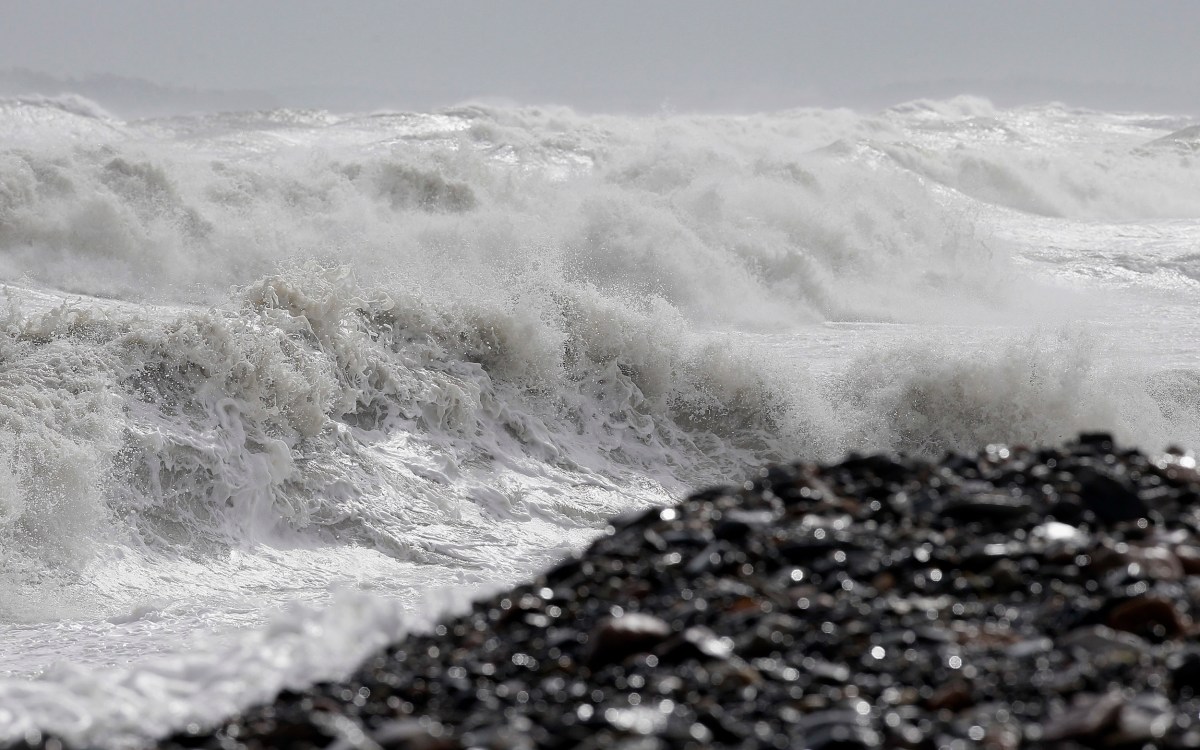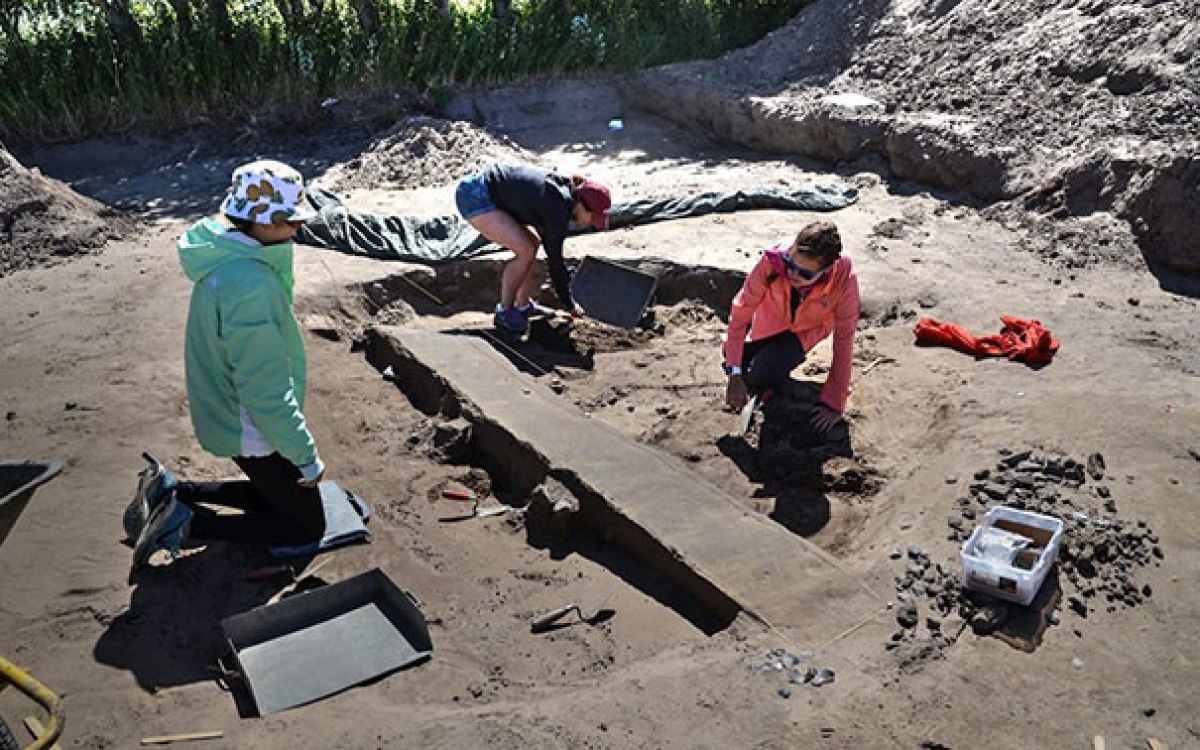
“Intense” sea-level rise was likely the “tipping point,” amid social, political, economic turmoil, for Vikings’ abandonment of Greenland in 1450, according to new research by Marisa J. Borreggine.
Kris Snibbe/Harvard Staff Photographer
Did rising seas drive Vikings out of Greenland?
Study helps fill gap in longtime archeological mystery: why Norse vanished in 15th century
Vikings occupied Greenland from about 985 to 1450 A.D., farming and building communities before they abruptly abandoned their settlements. Why they disappeared has long been a puzzle, but a new paper from the Department of Earth and Planetary Sciences determines that one factor — rising sea level — likely played a major role.
“There are many theories as to what exactly happened” to drive the Vikings out, said Marisa J. Borreggine, lead author of “Sea-Level Rise in Southwest Greenland as a Contributor to Viking Abandonment,” published April 17 in the Proceedings of the National Academy of Sciences.
“There’s been a shift in the narrative away from the idea that the Vikings completely failed to adapt to the environment and toward arguments that they were faced with myriad challenges, ranging from social unrest, economic turmoil, political issues, and environmental change,” said Borreggine, a doctoral candidate in the Harvard Kenneth C. Griffin Graduate School of Arts and Sciences.
Amid those pressures, “the changing landscape would’ve proven to be yet another factor that challenged the Viking way of life,” said Borreggine, who works in the Mitrovica Group led by Frank B. Baird Jr. Professor of Science Jerry X. Mitrovica. This likely led “to a tipping point before they abandoned the settlement.”
The departure of these Viking settlers coincided with the beginning of the period known as the Little Ice Age, which had a particular impact on the North Atlantic. But while cooling and freezing might seem likely to lower sea levels, a variety of factors combined to have the opposite effect in Greenland.
With the waters of the North Atlantic “contributing to that new ice volume, intuition might suggest that sea level should go down,” Borreggine said. However, a closer look at previously published geomorphological and paleoclimate data and the researchers’ modeling of ice-sheet growth instead suggested glacial isostatic adjustment, “a process that leads to changes in the gravitational field, the rotation axis, and crustal deformation as the ice grows or melts,” said Borreggine.
“Not only do you have the ground being pushed down, you also have the sea surface going up. It’s a double whammy.”
In a first for this kind of research, “We were able to apply that analysis of nonuniform sea-level change and more accurate sea-level physics to this longstanding archeological question of, ‘Why exactly did Vikings abandon the eastern settlement?’”
The researchers’ striking answer: Not only were sea levels drawn up by gravity, other factors — including the subsidence of Greenland’s land mass — made the settlement more prone to flooding.
Focusing on the period of Viking habitation from 1000 to 1450, “there’s already a background trend of sea-level rise upon Viking arrival in the eastern settlement,” Borreggine said. “It’s been rising for a few thousand years.” But there’s also a local effect: “crustal subsidence, or the sinking of land and the gravitational pull of water toward the growing ice sheet.”
“Not only do you have the ground being pushed down, you also have the sea surface going up,” Borreggine said. “It’s a double whammy.”
“We can do work to mitigate climate change. The Vikings were locked into it.”
During this period, researchers found that the settlers experienced “up to 3.3 meters of sea-level rise throughout their occupation.” For comparison’s sake, “that’s two to six times the rate of 20th-century sea-level rise. So it was pretty intense.”
Archaeological research into the life of the Vikings who settled in Greenland together with this novel application of sea-level science fleshed out this compelling story. Noting the partially drowned ruins of a Viking warehouse, Borreggine pointed out that one of the group’s analyses found that 75 percent of Viking sites are within 1,000 meters of an area of flooding. “This flooding was pervasive.”
The impact of rising seas can also be seen in the changing diet of the Vikings, as they shifted from their own agricultural products to more marine-based foods, perhaps as their fields became saturated with salt or flooded. Such a shift, said Borreggine, reveals “they were attempting to adapt to the rising sea level.”
This paper “shows the advantages of interdisciplinary research, bringing ideas from one field to another and contributing powerful new insights,” said Mitrovica.
If the lasting impact of sea-level rise sounds familiar in understanding current efforts to mitigate climate change, Borreggine noted the parallels — and one major difference.
“The Vikings didn’t really have a choice. They couldn’t stop the Little Ice Age. We can do work to mitigate climate change. The Vikings were locked into it.”








